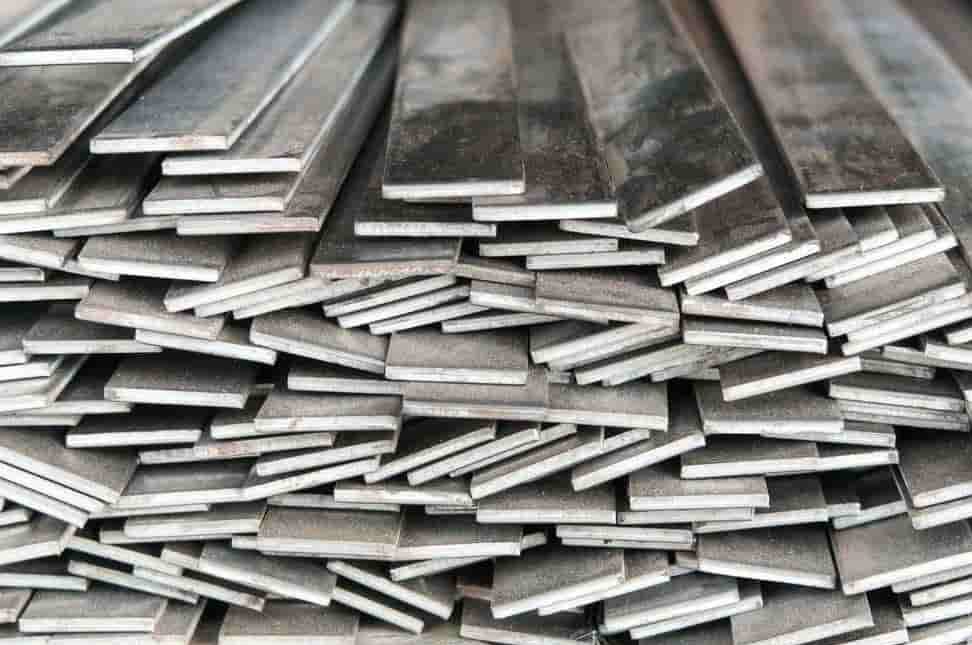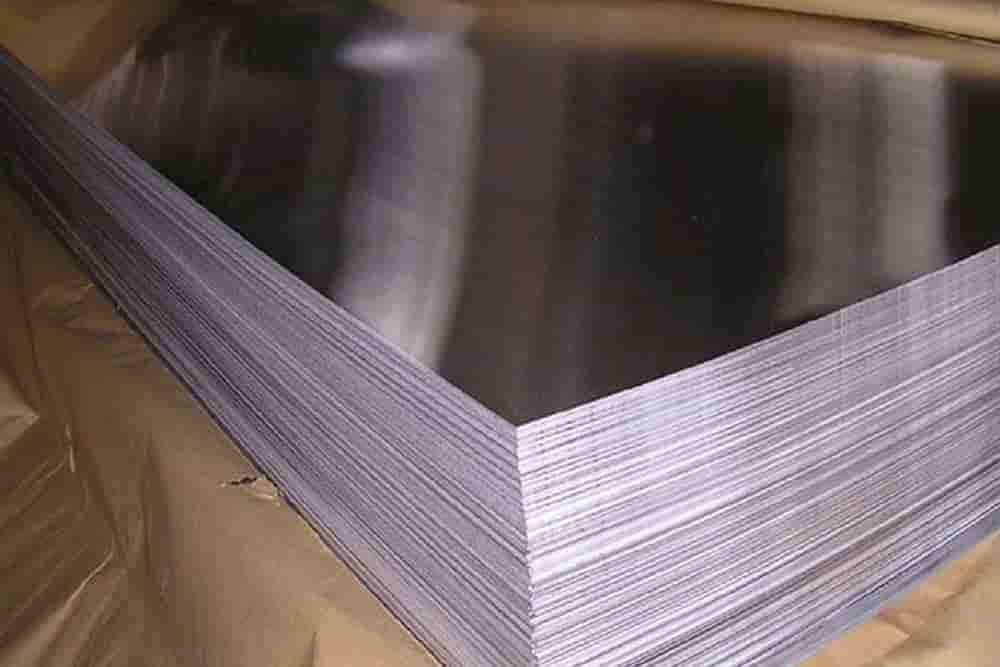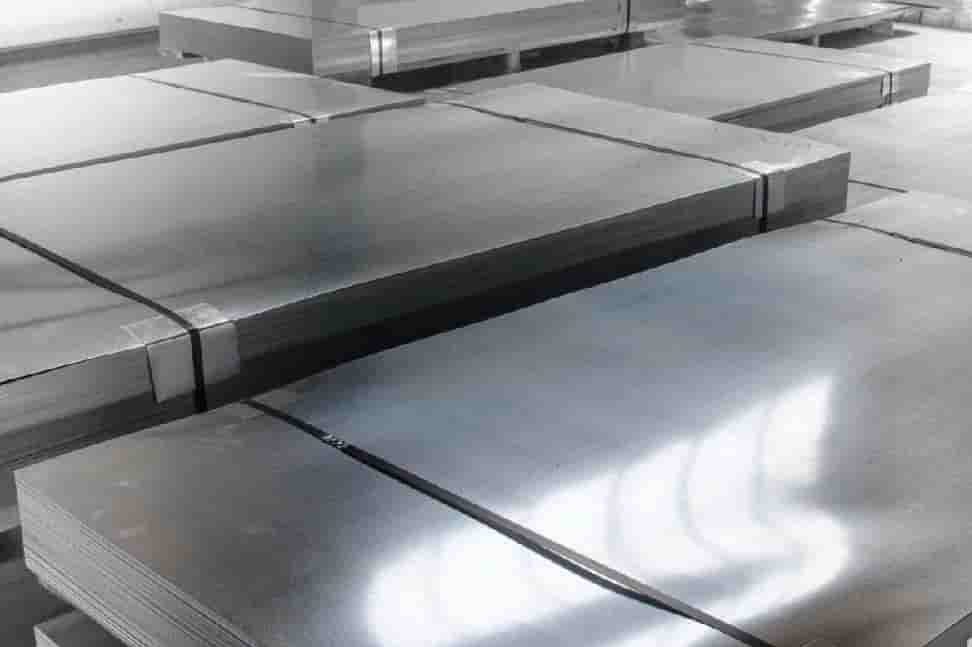O1 tool steel is an oil hardening, “shrink-free” multipurpose tool steel that can be hardened from low austenitizing temperatures to the Rockwell C 65 series. O1 tool steel is called low-alloy steel because it contains various additives.
O1 tool steel is a general-purpose tool steel that is typically used to provide sufficient hardness, strength, or wear resistance. It usually gives firm edges and can be sharpened but not easily dulled. Therefore, it is widely used in the manufacture of gauges, spacers, punches, jigs, knives, guides, handles, saws, knives, straight edges, jigs, machine parts, punches, blanking dies, wire drawing dies, forming dies, laminating dies, forming dies, sinking dies, spiral dies and trim matrices.

heat treatment
Heat treatment requires slow preheating of O1 steel to 1200°F, followed by heating at 1450-1500°F. These steels are then kept at the same temperature for 10 to 30 minutes and finally, the oil is quenched.
Low alloy steel is a metallic mixture composed of steel and another metal with desirable properties. Low alloy steel contains about 1%-5% alloying elements. As a result, it has a precise chemical composition that provides better mechanical properties and is designed to prevent corrosion.
Low alloy steel is usually heat treated, normalized and hardened during production. They are also solderable. However, to avoid weld cracks, welding heat treatment is necessary.
The significant advantages of low-alloy steel over steel with a low carbon content are:
- High yield stress
- Can withstand high temperatures
- good creep strength
- Antioxidant
- Hydrogen resistance
- Low-temperature ductility
Since low-alloy steel is used to manufacture thin-walled pressure vessels, higher yield and creep strengths are required. Low alloy steels such as 0.5 Mo and 12 CrMoVW are used in steam boilers, refinery crackers and reformers due to their good creep properties. The upper-temperature limit for low-alloy steel is approx. 600°C (1112°F).
Low alloy steel is a group of alloy steel made by adding elements such as vanadium, niobium and titanium, which is superior to ordinary carbon steel in terms of strength.
This steel is widely used in the automotive industry due to its light weight, as it has high strength while reducing the weight of the car.

The strength of micro alloyed steel without heat treatment is 415-825 MPa.
One thing to be aware of with this type of alloy plate is their corrosion, as this type of steel is generally considered to be used in thin gauge applications and is very susceptible to corrosion. Therefore elements can be used. Due to nickel, chromium and phosphorus are added to increase its corrosion resistance, but since this method is a bit expensive, this type of plate can be electroplated or galvanized to avoid corrosion.
Micro alloyed steel usually contains 0.15-0.55% carbon, 0.6-1.65% manganese and 0.15-0.65% silicon as the main matrix. These elements affect the structure by controlling precipitation reactions and the formation of second-phase deposits, thereby improving the mechanical properties of the alloy. In these steels, the desired properties are achieved due to the presence of microalloying elements and their effect on the steel microstructure.
However, by controlling the formation of austenite grain size and fine grain structure, the process of hardness precipitation in ferrite, resulting in network deformation and stress caused by carbide and nitride deposits, is achieved in micro alloyed steel. Suitable and desirable properties, control of inclusion forms, development of dislocation networks, etc.
In these steels, the required strength and other properties can be achieved after high-temperature heat treatment and control of operating parameters, as well as proper cooling to low temperatures. Comparable.

Therefore, by eliminating quenching and tempering operations, in addition to reducing costs, production speed can also be increased. Contact a metal trade expert for prices on alloy plates.
By reducing the percentage of carbon in these compounds, the weldability and flexibility of the steel is improved, and by adding microalloying elements to the steel, the strength and stress resistance of the steel is improved.
A715 and A656 standards have a strength of 80,000 psi, while non-alloy carbon steel has a strength of about 34,000 psi.
Among micro alloyed steels, due to their high strength and good formability, they have been able to produce parts using hydroforming, a plate drawing and forming method that minimizes the weight of the part, while the time, dimensional and thickness accuracy is high, the final weight of the product is reduced and the number of parts per plate is increased, which on the one hand saves steel consumption considerably.
Use micro alloy steel shafts with a minimum strength of 50,000 to 70,000 in cranes, concrete mixers, agricultural machinery, trucks, trailers, transmission towers, and more.
Engraving, shaping, and sawing micro alloyed products require 25-30% more energy than simple carbon products.

o1 tool steel sheet low alloy
As we talked about o1 tool steel and related products and using sheet with low alloy percentage, you can guess how hard and strong the tool steel can be. Contrary to popular belief, steel is not an element, but it is the most well-known alloy with a carbon content of between 0.2-1.5%. Steel is the most widely used ferrous metal and is made from white pig iron. Until now, steel has been divided into different categories. One of the most common classifications in steel is based on chemical composition and includes plain carbon, low alloy and high alloy steel.
Low alloy steel
First, we should take into account that low alloy steels can have a wide range of mechanical properties depending on the type of heat treatment they are subjected to. Low-alloy steel is an alloy steel processed by adding elements such as niobium, vanadium and titanium, and its hardness and strength are higher than ordinary carbon steel. This steel is actually carbon steel with elements added to improve its special properties. Generally speaking, the carbon content of the alloying element of low-alloy steel does not exceed 5%. Carbon, as the main element in carbon and alloy steel, has the following properties:
- increase hardness
- Increase strength and wear resistance
- Corrosion and heat resistance
High-strength low-alloy steels, sometimes called microalloys, are used for high electrical resistance when making narrow parts. In industries such as the automotive industry, where weight reduction is paramount, the use of microalloys is more common. Unheat treated microalloy steels range in strength from 415 to 825 MPa. Another important point about this type of alloy plate is to pay attention to their corrosion, because this type of steel is often used in thin places and is easily corroded. For this reason, elements such as nickel, chromium and phosphorus are added to increase its Corrosive, this method is a little expensive, but by galvanizing or galvanizing these sheets they can be protected from corrosion.
The main matrix of microalloy steel is usually 0.15-0.55% carbon, 0.6-1.65% manganese, 0.15-0.65%. These elements affect the structure and improve the mechanical properties of the alloy by controlling the deposition reaction and the formation of second-phase deposits. Achieving the desired properties in these steels depends on the presence and influence of microalloying elements on the microstructure of the steel.
On the other hand, by methods such as suppression of austenite grain size and formation of fine grain structure, formation of network deformation and stress caused by carbide and nitride deposits, etc., by repairing and improving ferrite grain size, etc., to achieve desired properties in micro-alloyed steels, development of dislocation networks, precipitation process hardness in ferrite, monitoring of inclusion forms, etc.
Strength and other desired properties can be obtained after hot working at elevated temperatures and monitoring operating parameters and proper cooling to low temperatures. This can be compared with the results of the parts produced by commonly used quenching and tempering methods.
In this way, by eliminating the tempering method, in addition to reducing costs, the production speed will also increase. By reducing the percentage of carbon in these compounds, the flexibility and weldability of the steel are improved, and by adding microalloying elements to the steel, the stress resistance of the steel is improved.

A715 and A656 standards are rated at 80,000 psi, while non-alloy carbon steels are closer to 34,000 psi.
Due to the high strength and good formability of micro-alloyed steel, parts can be machined using hydroforming, a sheet drawing and forming method that, in addition to high dimensional and thickness accuracy, minimizes lightweight parts. In this way, the final weight of the product is reduced and the number of pieces obtained from a plate is increased, in return, this will lead to significant savings in steel consumption. Micro alloy steel axles with a minimum strength of 50,000 to 70,000 are used in agricultural machinery, concrete mixers, trailers, trucks, cranes, transmission towers, and more. It takes 25-30% more energy to shape, engrave, and saw micro alloyed products than simple carbon products.
o1 tool steel sheet
O1 tool steel is just one of the low alloy products. Steel sheet with low alloy percentage is mostly used in the production of tools. This steel is produced in the same way as other steels; by combining coal and iron ore in a furnace to smelt it. During this process, impurities will be removed and large amounts of alloying elements will be added to this type of steel.
After the desired chemical composition is achieved, several additional steps are performed to ensure that the desired steel has the proper properties and performance. Selecting the appropriate filler metal for low-alloy steels In general, filler metals used for welding low-alloy steels are compatible with the mechanical and chemical composition of the base metal, regardless of the particular circumstances.
Low alloy filler metals are classified based on their tensile strength. These metals include alloying elements such as chromium, nickel, or molybdenum. Filler metals are designed to increase the strength of the weld metal and its application as well as compatibility with low-alloy base metal chemistry.

To ensure successful welding, the filler metal in the low-alloy steel must be compatible with the high tensile strength of the parent metal or have the same tensile strength and yield stress as the parent metal. Another thing to consider when choosing a low alloy filler metal is the thickness of the low alloy steel you intend to weld.
Quenched and hardened steels such as A514 have exceptional tensile, yielding and elongation properties as long as the thickness is less than 2 1/2 inches. The factor behind these changes is the quenching and tempering process. Because quenching thicker materials results in minimal yield and tensile strengths. Therefore, thicker materials are likely to require less strong filler metals.
“Weathering Steel”
controlled rolling
Steels such as COR-TEN are more resistant to corrosion. These types of alloys contain small amounts of phosphorus and copper in their composition to increase their strength against weathering.
Pearlite reduced steel
Hot steel rolls with a highly fractured austenitic structure turn into a skeleton of cubic iron and carbon during cooling.
acicular ferritic steel
Carbonless or mild steel has a grain structure of iron and carbon, the strength of which is increased by precipitation.
Duplex steel
Due to the structure of acicular iron and carbon, a small amount of carbon and hardening, these steels increase their strength. The carbon content of this steel is very low. They also have good solderability and ductility. Two-phase steel has high tensile strength and good ductility.

micro alloyed steel
These steels comprise iron and carbon microstructures consisting of a small and uniform amount of martensite. This microstructure results in increased hardness, reduced yield stress and good ductility. Steels containing small amounts of niobium, vanadium or titanium can improve grain size or precipitation hardening.
The most basic step in identifying and understanding low alloy steel is to understand its common uses, which are used in many different industries. The uses of low-alloy steel include military vehicles, earthmoving equipment and ship-to-shore pipelines, pressure tanks and pipelines, oil platforms and steel structures, etc. These types of steel are used to manufacture wear parts such as earth and mining equipment. In addition, low-alloy steels are widely used in the automotive industry due to their lightweight.
Because in addition to reducing the weight of the car, it has a lot of strength. Other uses for these steels are the wheels of heavy machinery and four-wheel motors, railway components, and equipment working with pneumatic systems used together in equipment and machinery subjected to constant shock.
Several common alloy steel groups, starting with HY 80, HY 90, and HY 100 sheets of steel, are used in the manufacture of hulls, submarines, bridges, and construction vehicles. These low-alloy steels contain nickel, molybdenum, and chromium to increase the toughness, strength, and weldability of the material. When welding low-alloy steel, pre- and post-heating are generally not required.











Your comment submitted.